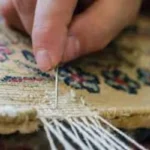Methods on How to Control Joint Pain
Joint pain can happen to anyone, not just athletes and the elderly. There could be underlying reasons why it is happening which is why seeing an Idaho Falls joint pain specialist is important if it seems to happen out of nowhere. Joint pain can be a real nuisance, but there are several things you can try to ease the discomfort. Here are some ideas you can use in your ways to control the pain.
Stay Active
I know it sounds counterintuitive, but gentle exercise can really help. Things like walking, swimming, or yoga can keep your joints flexible and strengthen the muscles around them, which provides better support. Staying sedentary is actually worse for your joints because blood flow will slow down, and circulation is what is important. Staying active will also help increase your flexibility and range of motion which will in turn help your joint pain.
Hot and Cold Therapy
Alternating between hot and cold packs can reduce pain and inflammation. Use a cold pack for about 15 minutes to numb the area and reduce swelling, then switch to a warm towel or heating pad to soothe stiff joints.
Over-the-Counter Meds
Pain relievers like ibuprofen (Advil, Motrin) or acetaminophen (Tylenol) can be effective. They can help reduce pain and inflammation, but it’s always good to check with your doctor if you’re planning to use them regularly. This also will not help the root cause, but will just help to make the symptoms more manageable if you are in need of immediate comfort.
Stay Hydrated and Eat Well
Drinking plenty of water and maintaining a balanced diet can make a big difference. Omega-3 fatty acids found in fish, flaxseeds, and walnuts are known to reduce inflammation. Also, foods rich in antioxidants like berries, nuts, and leafy greens can help. If you are struggling with getting enough water intake, IV therapy is a great option to help your body stay as hydrated as possible.
Weight Management
If you’re carrying extra weight, it can put more pressure on your joints, especially your knees and hips. Even a small amount of weight loss can ease this pressure and reduce pain. Some people complain that they have gained weight due to being unable to exercise because of pain, but there are many ways to manage your weight without exercise. However, moderate and light exercise will help the pain as mentioned above.
Supplements
Some people find relief with supplements like glucosamine and chondroitin. These can help with joint health, but results can vary. Tumeric is anti-inflammatory which can also help with inflammation in the joints. Again, it’s a good idea to consult with your doctor before starting any new supplement.
Physical Therapy
Sometimes seeing a physical therapist can provide tailored exercises and treatments that specifically target your problem areas. They can also teach you how to move in ways that protect your joints.
Rest
Don’t underestimate the power of rest. If a joint is particularly painful, giving it a break can help reduce inflammation. Just make sure to balance rest with enough movement to avoid stiffness.
Topical Treatments
Creams and ointments containing capsaicin, menthol, or other pain relievers can be applied directly to the skin over the painful joint. They can provide temporary relief by numbing the area or reducing inflammation.
Alternative Therapies
Some people find relief with acupuncture, massage, or chiropractic adjustments. These methods can help improve blood flow and reduce pain and stiffness.
It might take some trial and error to find what works best for you, but hopefully, these tips give you a good starting point. Always a good idea to chat with a healthcare provider before starting any new treatment!







